Comments
from Mr. PGC: Throughout
history, many people have made lasting contributions to the
world of plants. In these pages, we hope to pay tribute to
some of them. Our concentration will be primarily on those
who have introduced plants to the gardening world, those who
have helped spread the word about gardening and those who
have made significant contributions to landscaping and
landscaping design around the world.
This list will be constantly growing as we add
new names. If you have someone who you think should be on
the list, please send us an
Email.
|
|
|
 |
 |
-
Fairchild, Dr
David
-
Falstad, Clarence
-
Farges, Père Paul Guillaume
-
Farrand, Beatrix
-
Farrer, Reginald
-
Fischer, Helen Field
-
Fish, Margery
-
Fisher, Eunice V.
-
Fletcher, Harold
-
Foerster, Karl
|
|
 |
|
John
Fraser |
|
|
 |
|
 |
 He created the Section of Foreign Seed and Plant
Introduction which is a department of the
United States Department of Agriculture in
1891. For 37 years, he traveled the world in search of plants of
potential use to the American people. He brought into
cultivation in the
United States many important plants, including
mangos,
alfalfa,
nectarines,
dates,
horseradish,
bamboos and
flowering
cherries. He created the Section of Foreign Seed and Plant
Introduction which is a department of the
United States Department of Agriculture in
1891. For 37 years, he traveled the world in search of plants of
potential use to the American people. He brought into
cultivation in the
United States many important plants, including
mangos,
alfalfa,
nectarines,
dates,
horseradish,
bamboos and
flowering
cherries.
The Fairchild Tropical Botanical Garden in Miami,
Florida is
named in his honor. He made many trips to
Asia
to bring plants
back for the gardens during the late 1930's.

|
|
 |
|
 |
 
|
|
 |
|
 |
 Farges was a
French missionary and naturalist who traveled to
China in 1867. Around 1892, he began to collect plant
specimens and preserved over 4,000 during his stay in China. He
sent seeds of the handkerchief tree (Davidia
involocrata) back to
France. Farges was a
French missionary and naturalist who traveled to
China in 1867. Around 1892, he began to collect plant
specimens and preserved over 4,000 during his stay in China. He
sent seeds of the handkerchief tree (Davidia
involocrata) back to
France.
He was still
collecting and identifying plants in China in the 1890s during
the time when
E.H. Wilson
was also in the area. Wilson brought some of the plants from
Farges' efforts back to be introduced into
Europe. Farges stayed in China until his death in 1912.
The blue bean tree
(Decaisnea
fargesii) is named in his honor. A few of the hundreds
of plants connected with his name include
Abies fargesii,
Arisaema fargesii, Bashania fargesii,
Catalpa fargesii,
Clematis fargesii,
Cypripedium fargesii,
Decaisnea fargesii,
Paris fargesii,
Paulownia fargesii, and
Rhododendron fargesii.
|
|
 |
|
 |
 From 1912 to 1943, Beatrix Farrand acted as the consulting
landscape architect for
Princeton University
in
New Jersey. She also worked
with campus designs at Yale and the University of Chicago. She
was the only woman involved in the creation of the American
Society of Landscape Architects.
Her
designs were used at
Dartington Hall and her beautifully
documented city garden of
Dunbarton Oaks,
Washington, D.C. From 1912 to 1943, Beatrix Farrand acted as the consulting
landscape architect for
Princeton University
in
New Jersey. She also worked
with campus designs at Yale and the University of Chicago. She
was the only woman involved in the creation of the American
Society of Landscape Architects.
Her
designs were used at
Dartington Hall and her beautifully
documented city garden of
Dunbarton Oaks,
Washington, D.C.
Forsythia 'Beatrix
Farrand' is named in her honor.

|
|
 |
|
 |
 Botanical writer and plant-hunter,
Farrer was born
in London and brought up in Ingleborough,
England where he became
interested in rock garden plants. He wrote several books on the
subject including My Rock Garden and The English
Rock Garden. Botanical writer and plant-hunter,
Farrer was born
in London and brought up in Ingleborough,
England where he became
interested in rock garden plants. He wrote several books on the
subject including My Rock Garden and The English
Rock Garden.
He was an avid plant hunter and
introduced several species of
Primula and
Rhododendron.
He died on a Burmese (Myanmar) mountain at the age of 40.
Plants
discovered by him include
Daphne tangutica,
Buddleja
alternifolia,
Gentiana farrerii,
Cypripedium
farrerii and
Viburnum
farreri.

|
|
 |
|
 |
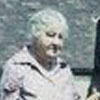 Her
gardens at East Lambrook Manor in
England were the topic of 8 books she
wrote in the 1950s and 60s. She was influential in the
movement toward informal cottage gardens. Her
gardens at East Lambrook Manor in
England were the topic of 8 books she
wrote in the 1950s and 60s. She was influential in the
movement toward informal cottage gardens.
Plants named for her include
Bergenia
'Margery Fish',
Penstemon 'Margery Fish', and
Pulmonaria saccharata 'Margery Fish'.

|
|
 |
|
 |
 Helen
Field Fischer from Iowa was called by one source the “mother
of the American Hemerocallis Society.” She was the "star" of
the daily radio show, “Garden Club of the Air” starting in
the 1920s. Her brother was the owner of the Henry Field Seed
Company. The cultivar Hosta ‘Helen Field Fischer’ is
named in her honor. Helen
Field Fischer from Iowa was called by one source the “mother
of the American Hemerocallis Society.” She was the "star" of
the daily radio show, “Garden Club of the Air” starting in
the 1920s. Her brother was the owner of the Henry Field Seed
Company. The cultivar Hosta ‘Helen Field Fischer’ is
named in her honor.
|

|
|
 |
|
 |


|
|
 |
|
 |
He served as
Director of
the
Royal Horticultural Society Garden at
Wisley from 1951-1954 and Regius Keeper of the
Royal Botanic Garden in
Edinburgh, Scotland. Fletcher compiled the International
Rhododendron Register for the RHS and was the International
Registration Authority for the genus. He was a recipient of
the
Victoria Medal of Honour and the Loder Rhododendron Cup.
The specific epithet, fletcheri,
is named for him. Plants having this name include
Chamaecyparis lawsoniana 'Fletcheri'.

|
|
 |
|
 |
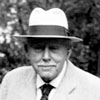 He was a landscape designer and nurseryman
noted for a "well-structured" informality in the
garden and a long season
of interest in his perennial bed designs. His nursery was
near Potdsdam,
Germany where he hybridized nearly 650 new
varieties of plants. He was a landscape designer and nurseryman
noted for a "well-structured" informality in the
garden and a long season
of interest in his perennial bed designs. His nursery was
near Potdsdam,
Germany where he hybridized nearly 650 new
varieties of plants.
Foerster was a well-known author of gardening books and
articles. According to
W. George Schmid in
The Genus Hosta
(1991), “Hostas played an important part in his landscaping
philosophy in which he juxtaposed large leafy plants with
grasses and ferns, making for a very pleasing balanced
arrangement.
Plants named in his honor included
Calamagrostis x actuiflora 'Karl Foerster',
Molinia
caerulea subsp. arundinacea 'Karl
Foerster',
Erigeron 'Foersters Liebling' and
Campanula carpatica var turbinata 'Foerster'.

|
|
 |
|
 |
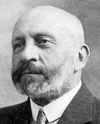 Nicholas Forestier redesigned the garden of
Bagatelle in
the Bois-de-Boulogne in Paris. He designed many gardens in
Spain
and also worked in the
United States and
South America. Nicholas Forestier redesigned the garden of
Bagatelle in
the Bois-de-Boulogne in Paris. He designed many gardens in
Spain
and also worked in the
United States and
South America.

|
|
 |
|
 |
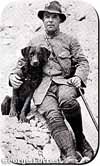 George Forrest
is often considered the greatest of all collectors of
rhododendrons. He is credited with introducing hundreds of species from
China
and
Tibet to the
Edinburgh Botanic Garden, including
R. giganteum
and R. sinogrande. He was also heavily involved with
members of the primrose family (Primula). George Forrest
is often considered the greatest of all collectors of
rhododendrons. He is credited with introducing hundreds of species from
China
and
Tibet to the
Edinburgh Botanic Garden, including
R. giganteum
and R. sinogrande. He was also heavily involved with
members of the primrose family (Primula).
He collected over 30,000 herbarium specimens.
In addition to over 300
Rhododendron, he introduced camellias, magnolias (Magnolia), Himalayan
poppies (Meconopsis), lilies
(Lilium),
primroses (Primula) and
gentians (Gentiana).
Primula forrestii and many other plants
have been named in his honor. These include
Iris forrestii,
Hemerocallis forrestii, Abies forrestii,
and Hypericum forrestii.
Forrest's plant discoveries include:
-
Clematis chrysocoma and
C. forrestii
-
Rhododendron: souliei, sulfureum,
trichocladum, neriiflorum, taliense,
beesianum, irroratum, rubiginosum and others
-
Lilium: thomsonianum, giganteum,
delavayi and ochraceum
-
Pieris forrestii
-
Pleione: delavayii, grandiflora and
forrestii
-
Primula:
malacoides, beesiana and many
others.

|
|
 |
|
 |
 William Forsyth from Old Meldrum,
Scotland, became a distinguished horticulturist and was
appointed Chief Superintendent of the Royal Gardens at
Kensington
and St James' Palace in 1784. He trained under
Philip Miller. In 1802 he published a "Treatise
on the Culture and Management of Fruit Trees" which became a
best-seller in its day. William Forsyth from Old Meldrum,
Scotland, became a distinguished horticulturist and was
appointed Chief Superintendent of the Royal Gardens at
Kensington
and St James' Palace in 1784. He trained under
Philip Miller. In 1802 he published a "Treatise
on the Culture and Management of Fruit Trees" which became a
best-seller in its day.
He is best remembered now for the family
of plants known as "Forsythia".

|
|
 |
|
 |
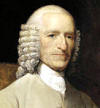 He
was an eminent physician in
England who, as so many in
profession, was an avid botanist who maintained a large
personal garden. A catalog of the plants in his gardens was
published by John Lettsom. Fothergill was credited with
introducing several new plants from other parts of the world
into cultivation in
England. He
was an eminent physician in
England who, as so many in
profession, was an avid botanist who maintained a large
personal garden. A catalog of the plants in his gardens was
published by John Lettsom. Fothergill was credited with
introducing several new plants from other parts of the world
into cultivation in
England.
The genus,
Fothergilla, was named in his honor.
|
|
 |
|
 |
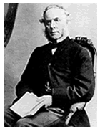 After studying at the
Edinburgh Botanic Garden, and at the
Royal
Horticultural Society
gardens at
Chiswick, Fortune was sent to
China
to find new plants by the RHS in 1843. He was the first collector in China to have relative
freedom and he introduced many essential garden plants to the Western
world. Fortune was also
briefly the curator of the
Chelsea Physic Garden in London. After studying at the
Edinburgh Botanic Garden, and at the
Royal
Horticultural Society
gardens at
Chiswick, Fortune was sent to
China
to find new plants by the RHS in 1843. He was the first collector in China to have relative
freedom and he introduced many essential garden plants to the Western
world. Fortune was also
briefly the curator of the
Chelsea Physic Garden in London.
His trees included the false larch
(Pseudolarix), the Chinese plum yew
(Cephalotaxus
fortunei),
the umbrella pine (Sciadopitys
verticillata) and the
Cryptomeria. In 1848 he returned
to China and sent seeds and plants of the tea tree to India,
thereby becoming the foundation for the India Tea industry.
Fortune is
credited with introducing certain hostas into England and
Europe. Until
W.
George Schmid's book
The Genus Hosta in 1991, those plants were thought to
be a species and were named Hosta fortunei. Schmid determined
that the plants were not from a naturally occurring species and
were actually cultivars created in either Asia or after
introduction to Europe. So, they have been "demoted" to cultivar
status and are now know by the name
Hosta 'Fortunei'.
Other garden plants introduced by him include:
Forsythia
viridissima, Jasminium nudiflorum,
Anemone
japonica, Dielytra spectabilis, Kerria japonica,
Euonymus fortunei,
Viburnum plicatum,
Trachycarpus fortunei, Cephalotaxus
fortunei,
Hosta
'Fortunei',
Rhododendron fortunei,
Mahonia fortunei,
Pleioblastus fortunei.
|

|
|
 |
|
 |
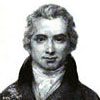 A Scotsman, John Fraser started business in London as a
linen-draper near the
Chelsea Physic Garden. He gave up his
business to become a botanist and plant collector. Under
sponsorship, he made visits to several parts of
North America
and the West Indies in search of plant to bring back to
Europe.
Most of this activity took place in the period between 1780 and
1810. A Scotsman, John Fraser started business in London as a
linen-draper near the
Chelsea Physic Garden. He gave up his
business to become a botanist and plant collector. Under
sponsorship, he made visits to several parts of
North America
and the West Indies in search of plant to bring back to
Europe.
Most of this activity took place in the period between 1780 and
1810.
In the latter
part of his career, he was the official plant collector for the
Czar of
Russia. He accumulated a large herbarium of plant
specimens which was eventually obtained by the
Linnean Society.
Among the plants he introduced
was
Magnolia fraserii but his most significant discovery
is the species,
Rhododendron catawbiense.
Plants named for him include
Photinia x fraseri*, Rhododendron 'Fraseri',
Abies fraseri and
Chamaecyparis
lawsoniana 'Fraseri'.
*Email comment from David: "Photinia fraseri is named in 1961 for Fraser Nurseries
in Birmingham, Alabama and/or its president, Oliver Weston
Fraser, not for John Fraser."
 |
|
 |
|
 |
 The specific epithet,
frikartii, was named for this nurseryman from Stafa,
Switzerland. The plant,
Aster x frikartii, includes this name. The specific epithet,
frikartii, was named for this nurseryman from Stafa,
Switzerland. The plant,
Aster x frikartii, includes this name.

|
|
 |
|
 |
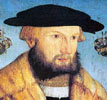 German
professor of medicine who was also a dedicated field botanist.
He was credited with describing and illustrating over 500
plants in his book, De Historia Stirpium. German
professor of medicine who was also a dedicated field botanist.
He was credited with describing and illustrating over 500
plants in his book, De Historia Stirpium.
In 1693,
Father
Charles Plumier named the genus
Fuchsia in honor of Fuchs.

|
|
 |
|
 |
 
|

|
|

